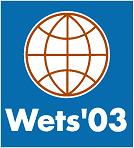 |
|
|
|
|
|
|
|
|
|
|
|
|
WETS'03 Workshop
(World Energy Transmission System) Which world energy transmission system in 2050?
What role would Power Insulated Cables play? MEUDON, FRANCE
Thursday 26 June, 2003 |
|
Objectives
World population expansion (6 billion today, probably rising to 8 - 10 billion by 2050) and the emergence of certain developing countries is expected to lead to a rise in global energy consumption from 9 Btoe (in 1995) to 14 or even as much as 30 Btoe by the mid-21st century. How should we confront this energy situation and allow the poorest countries access to a minimum degree of comfort, without damaging the planet ? Modified Last : 12/03/2022 |